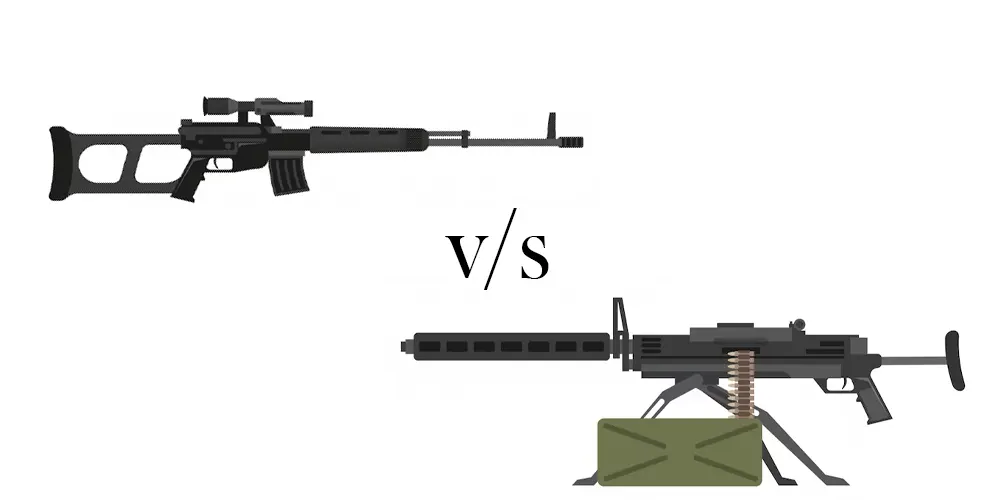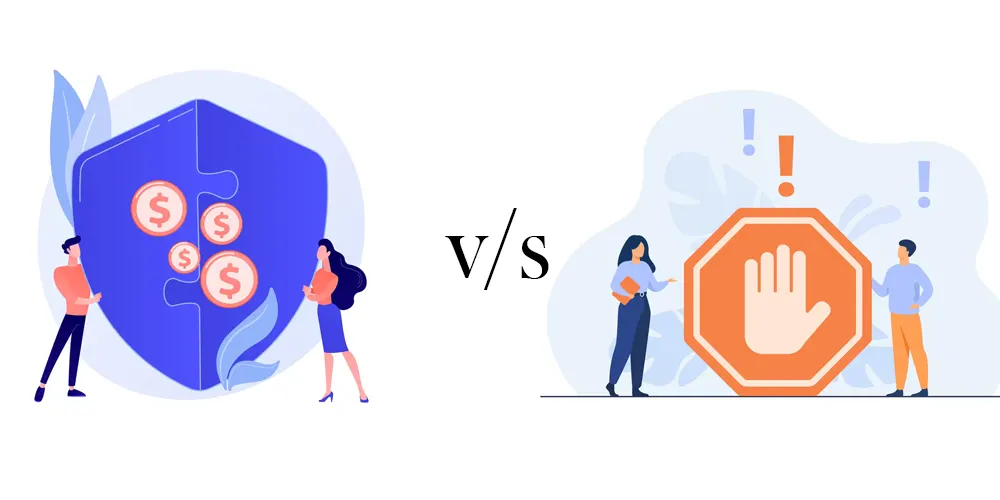Preview Dialler vs Power Dialler - Understanding Top 5 Differences
The world of customer support and call centres keeps changing with every passing moment. Advancing technology and changing customer expectations are at the forefront of driving these changes.
This leaves call centre operators, customer service department heads and even VoIP carriers with a big question. Which dialler should they use or recommend to their customers? We will be making it easy for you to find an answer to this question.
We’ll be discussing two prominent types of diallers in the market and understanding what makes them different in this article. The diallers in question here are the Preview dialler and Power dialler.
So it doesn’t matter if you're a call centre operator looking to optimise your operations or a VoIP carrier seeking to offer advanced calling solutions. Join me as I unravel the differences between preview dialers and power dialers.
What is a Preview Dialler?

A preview dialer is a software tool used in call centres that provides call centre agents with a preview or a glimpse of important customer information before initiating a call.
It allows agents to review customer details such as contact information, previous interactions, purchase history, or any relevant notes.
This preview allows agents to familiarise themselves with the customer's background and needs before making the actual call.
The purpose of a preview dialer is to enable agents to prepare and personalise their approach based on the available customer information. Agents can gather insights, anticipate customer requirements, and tailor their conversations accordingly.
Unlike other dialling methods that automatically dial the next contact, a preview dialer gives agents the control to decide when to initiate the call. This allows agents to ensure they are fully prepared, mentally and emotionally, before engaging with the customer
It also helps them manage their workload and allocate time for necessary preparations between calls.
Now that you know the basics of a Preview dialler, let’s take a look at its key features.
Key Features
1. Customer Information Preview: A preview dialer allows call centre operators to preview essential customer information before making the call.
This includes contact details, historical data, preferences, and previous interactions. It enables agents to gain insights into the customer's background, enabling more personalised and effective conversations.
2. Call Scheduling: Preview dialers offer the functionality to schedule calls at optimal times. Call centre operators can strategically plan and organise their outbound calls, ensuring that they reach customers when they are most likely to be available and receptive.
3. Agent Control and Preparation: With a preview dialer, agents have control over the calling process. They can review customer information and prepare for the conversation, including scripting or noting down key talking points.
This level of control enhances agent confidence and enables them to deliver a higher quality of service.
4. Compliance Management: Preview dialers help ensure compliance with regulatory requirements. Call centre operators can review customer profiles, ensuring that each call follows the necessary compliance guidelines. This feature is particularly crucial in industries with strict regulations, such as finance or healthcare.
5. Call Disposition and Logging: Preview dialers provide the capability to log and track call dispositions. Agents can record the outcome of each call, whether it's a successful sale, a callback request, or any other relevant information. This feature facilitates efficient call tracking, analysis, and follow-up actions.
6. CRM Integration: Many preview dialers integrate with Customer Relationship Management (CRM) systems. This allows seamless data exchange between the two platforms.
This integration ensures that customer information is up-to-date and readily accessible, enhancing the overall efficiency and effectiveness of the call centre operations.
With this covered, we can now move on to learning about Power dialler!
What is a Power Dialler?

A power dialer is a software tool used in call centres that automates the process of dialling phone numbers and connects call centre agents to the next available call.
It works by automatically dialling a predetermined number of phone numbers from a list, one after another, without requiring manual dialling by the agent.
The main purpose of a power dialer is to increase call centre efficiency and productivity. Power dialers automate the process of dialling and handling connected calls.
As a result, agents don't have to dial numbers manually, wait for calls to connect and deal with busy lines or unanswered calls.
It dials multiple numbers simultaneously or in rapid succession, ensuring that agents are consistently engaged in conversations.
Once a call is connected, the power dialer quickly transfers the call to an available agent, bypassing any unnecessary waiting time. This helps agents maximise their talk time, as they spend less time dialling and more time engaging with customers.
The power dialer also provides features like call monitoring, call recording, and automatic call logging to assist agents in managing and documenting their interactions effectively.
Now let’s take a look at the key features of a Power dialler!
Key Features
1. Automated dialling: The power dialer automates the dialling process, eliminating the need for agents to manually dial each number. It dials a series of numbers from a contact list automatically, saving time and effort.
2. Rapid Call Connection: With its high-speed dialling capabilities, the power dialer connects agents to the next available contact as soon as they finish the previous call. This minimises idle time and maximises the number of conversations agents can have in a given timeframe.
3. Call Progress Detection: Power dialers employ intelligent algorithms to detect call progress, distinguishing between live answers, voicemails, busy signals, and disconnected numbers. This ensures that agents are connected to live contacts, increasing their efficiency and reducing wasted calls.
4. Call Analytics and Reporting: Power dialers provide detailed call analytics and reporting features. Operators can track key metrics such as call duration, call outcomes, conversion rates, and agent performance. These insights enable data-driven decision-making and help optimise campaign strategies.
5. Call Recording and Monitoring: Many power dialers offer call recording and monitoring capabilities. This allows supervisors to listen to and review agent calls for quality assurance, training purposes, and compliance adherence.
6. Dynamic Call Scripting: Power dialers often include dynamic call scripting functionality. This feature provides agents with scripted prompts, guiding them through conversations with customers. It ensures consistent messaging and helps agents navigate complex scenarios more effectively.
7. CRM Integration: Power dialers seamlessly integrate with Customer Relationship Management (CRM) systems, enabling synchronised data exchange. This integration ensures that call centre operators have real-time access to customer information, enhancing the quality and relevance of interactions.
8. Do Not Call (DNC) Compliance: Power dialers typically include DNC compliance features to adhere to regulatory requirements. They can automatically detect and filter out numbers registered on do-not-call lists, ensuring compliance with telemarketing regulations.
Now that we’ve understood both the diallers in detail, let's dive into their differences.
Key Differences - Preview Diallers vs Power Diallers
Here we will cover the top 5 differences between a Preview and a Power Dialler.
1. Call Initiation Process - Slow and controlled vs Quick and random

A preview dialer provides call centre operators with a preview of customer information before initiating a call. Agents have the opportunity to review essential details such as contact information, historical data, and previous interactions.
This allows them to gather insights and prepare for the upcoming conversation. Once ready, the agent manually initiates the call, ensuring a personalised and informed approach.
The preview dialer empowers agents to make conscious decisions about when to dial, who to dial, and how to tailor their communication based on the available customer information. This level of control and preparation leads to more personalised interactions and increased agent confidence.
On the other hand, a power dialer follows a more automated approach. It dials a series of phone numbers from a contact list automatically, without requiring manual initiation by the agent.
The power dialer uses advanced algorithms to determine the ideal pace and timing of the calls, aiming to maximise agent productivity.
When a call is completed, the power dialer automatically moves on to the next contact in the list, rapidly connecting agents to available leads.
This high-speed dialling process reduces idle time and enables agents to engage in a higher volume of conversations within a given timeframe.
2. Control Over Call Pacing - A Sniper vs Machine Gun

A preview dialer provides call centre operators with a higher degree of control over call pacing. Agents can preview customer information before initiating a call.
This allows them to assess the situation and determine the appropriate timing for each conversation. It also enables them to personalise their approach and tailor the conversation to the specific needs of the customer.
This control over call pacing ensures that agents have the necessary information to engage effectively with customers. Which leads to more successful interactions and higher customer satisfaction.
On the other hand, a power dialer operates with a more automated and accelerated call-pacing approach. It dials a predetermined number of calls simultaneously or in rapid succession, aiming to keep agents consistently engaged in conversations.
The power dialer automatically moves to the next call as soon as the previous one is completed. This helps minimise idle time and maximise the number of calls made within a given timeframe. This rapid call pacing is ideal for high-volume campaigns where the primary objective is to connect with as many contacts as possible.
3. Impact on Agent Productivity and Efficiency

A preview dialer, with its emphasis on personalised interactions, can have a positive impact on agent productivity and efficiency. An enhanced level of preparation leads to more focused and effective interactions.
Thus, resulting in higher conversion rates and improved agent productivity. Agents can engage with customers in a more informed manner. This further increases their chances of success and reduces the time spent on unproductive calls.
However, the preview dialer may introduce some downtime as agents review customer information, potentially affecting overall call volume.
On the other hand, a power dialer is designed to maximise agent productivity and efficiency through automation and rapid call pacing.
By automatically dialling a series of numbers and swiftly moving agents from one call to the next, the power dialer minimises idle time. Thus ensuring agents are consistently engaged in conversations.
This accelerated process allows agents to reach a higher volume of contacts within a given timeframe, amplifying their productivity.
Power dialers are particularly effective in high-volume campaigns where the goal is to make a large number of calls and generate leads or sales.
However, the automated nature of the power dialer may sacrifice some personalization and reduce the opportunity for agents to review customer information before each call.
4. Flexibility vs Scalability

A preview dialer offers a higher level of flexibility in terms of call handling. Call centre operators can review customer information before initiating a call.
This flexibility allows agents to tailor their conversations, address individual concerns, and provide personalised solutions.
The preview dialer also offers the flexibility to reschedule calls or prioritise certain contacts based on the information available. This adaptability enhances customer satisfaction and can lead to improved campaign outcomes.
In terms of scalability, a preview dialer may have limitations as the manual review process can slow down the call volume, making it less suitable for high-volume campaigns.
In contrast, a power dialer excels in terms of scalability. It is designed to handle a large volume of calls efficiently and rapidly.
The power dialer can quickly connect agents to the next available contact, eliminating manual dialling and reducing idle time. This scalability allows call centre operators to expand their operations without compromising productivity.
Power dialers are particularly well-suited for high-volume campaigns where reaching a large number of contacts is the primary objective.
However, the automated nature of power dialers may result in reduced flexibility as agents have limited control over call pacing and the ability to personalise interactions.
5. Compliance and Regulations

A preview dialer offers advantages in terms of compliance and regulations. Agents have the opportunity to ensure compliance with regulations such as Do Not Call (DNC) lists by reviewing customer information.
They can cross-reference customer details with the DNC database to avoid calling individuals who have explicitly opted out. This level of control helps minimise the risk of non-compliance and potential legal repercussions.
Furthermore, the preview dialer allows agents to adhere to specific regulatory requirements by providing them with necessary information and prompts during the call.
This ensures that agents communicate in a manner that meets compliance standards, such as providing required disclosures or obtaining necessary consent.
A power dialer may have limitations when it comes to compliance and regulations. The automated nature of the power dialer introduces the risk of inadvertently dialling numbers that are on the DNC list or failing to comply with specific regulations.
While power dialers may have built-in features to filter out certain numbers, there is still a potential for errors or oversights.
It is crucial for call centre operators to use power dialers to implement additional measures and periodic audits to ensure compliance with relevant regulations.
I know what you’re wondering now. While you understand differences between the two, you want to know which industries need which type of dialler. Let’s answer that.
Top 5 Industries Most Suitable for Preview Diallers

1. Financial Services: In the financial services industry, a preview dialer is highly suitable for activities such as debt collection, credit card services, or mortgage refinancing.
Agents can review customer financial information and tailor their approach to provide personalised solutions, ensuring compliance with regulations while maximising the chances of successful customer interactions.

2. Healthcare: Preview dialers are beneficial in healthcare industries, including medical billing, patient outreach, and appointment scheduling.
Agents can preview patient records, medical history, or specific requirements, allowing them to provide better assistance and address individual healthcare needs.
This personalised approach enhances patient satisfaction and improves overall healthcare service quality.

3. Sales and Marketing: In sales and marketing, a preview dialer is valuable for lead generation, customer acquisition, and product promotions.
Agents can review customer preferences, purchase history, or any previous interactions to customise their sales pitches.
This helps them effectively highlight the benefits of products or services, leading to higher conversion rates and increased sales revenue.

4. E-commerce and Retail: Preview dialers can be useful in e-commerce and retail industries for order confirmations, delivery updates, or customer support
Agents can quickly access customer order details, delivery status, or any concerns raised, enabling them to provide prompt and accurate assistance.
This personalised approach fosters customer loyalty and satisfaction in an increasingly competitive market.

5. Travel and Hospitality: In the travel and hospitality sector, a preview dialer is suitable for reservation confirmations, customer inquiries, or loyalty program management.
Agents can preview customer travel preferences, previous bookings, or specific requests, ensuring a personalised and seamless experience. This level of customization enhances customer satisfaction and loyalty within the travel and hospitality industry.
Top 5 Industries Most Suitable for Power Diallers

1. Telemarketing: Power dialers are highly suitable for telemarketing industries where high call volumes are required to reach a large number of potential customers.
The automated dialling feature allows agents to quickly connect with prospects, minimising idle time and maximising their talk time. This improves productivity and enables telemarketers to efficiently promote products or services.

2. Call centres: Power dialers are commonly used in call centres across various industries. They are particularly beneficial for customer service centres that handle a large volume of inbound and outbound calls.
The automated dialling feature helps agents handle more calls per hour, improving overall call centre efficiency and reducing customer wait times.

3. Collections and Debt Recovery: Power dialers are well-suited for collections and debt recovery agencies. They can automatically dial multiple debtor numbers, enabling agents to efficiently manage collections and increase their reach.
The power dialer's ability to filter out disconnected numbers or voicemails ensures agents spend more time speaking with debtors and improves collection rates.

4. Market Research: Power dialers are ideal for market research firms conducting surveys or gathering data through phone interviews.
The automation capabilities allow researchers to reach a large number of respondents in a shorter period. This expedites the data collection process and provides researchers with a larger sample size for analysis.

5. Fundraising and Non-profit Organisations: Power dialers are beneficial for fundraising campaigns conducted by non-profit organisations. The automated dialling feature helps reach a larger donor base efficiently.
Agents can focus on building relationships and engaging with potential donors, increasing the chances of securing donations and supporting the organisation's cause.
With that, we’re at the end of our journey so let’s wrap up everything we’ve learnt today!
To Conclude With
Well, that was a long read and if you’ve skipped to the conclusion, here’s the gist of it. Both Preview and Power diallers have their space in customer service operations. Both cater to different requirements and have distinct advantages.
If your industry was among the ones mentioned above, you already know what option to go with. In case your industry wasn't mentioned, I'm sure you have a good idea about how they work, and the pros and cons of both diallers.
Still think you need something different? How about you try to build your own dialler with ConnexCS?
























































































































